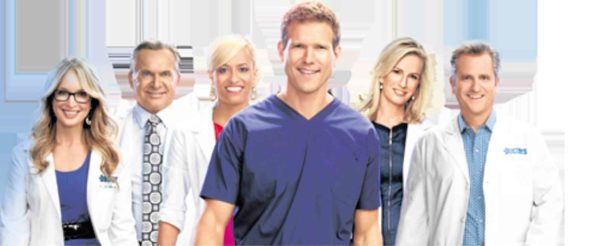More topical medical features on ‘The Doctors’

“The Doctors”
Morning shows are a staple on TV, with many channels producing programs usually telecast on weekend mornings that focus on an ailment per episode.
After an expert has expatiated in detail on the disease du jour, the guest medico answers all sorts of questions from viewers about what ails them or a relative.
This open forum portion is popular, especially with tightwad viewers who want to save money and avoid a trip to the clinic or hospital for diagnosis and prescription.
The Pinoy TV version of the medical program adds to its freebie attractions with medical and dental clinics that treat members of the studio audience, free of charge.
In addition, the doctor-hosts are often chosen not just for their competence, but also for their good looks—and even more attractive “bedside manner.”
Article continues after this advertisementOn cable and subscription TV, the leading medical program is “The Doctors” on Lifestyle.
Article continues after this advertisementWe’ve watched the show for a long time now, and can share that it has been savvily repackaged to make its features more viewer-friendly, and thus boost its ratings.
The changes include the choice of younger and more personable host-doctors to help make each telecast a viewing treat.
There’s also an obvious effort to do features on more topical and even controversial medical problems and issues, quite a number of them dealing with psychosexual concerns of the edgy and exotic sort.
Since doctors are supposed to be clinically objective about the ailments or disorders they discuss, even conservative viewers cut them more slack than usual when they call a spade a shovel.
There’s also an effort to inject more humor into the discussions, with the resident doctors and their guests sunnily seeing the brighter side of some patients’ woes.
Of course, they have to make sure that they don’t come off as insensitive and even crass—that’s when a good and judicious bedside manner comes in real handy.
Adding further to the more varied and edgier mix of offerings on “The Doctors” are occassional how-to tutorials, and comparative studies of treatments’ relative effectivity.
For instance, a recent telecast helped female viewers determine the best way to “groom” their privates.
What was the better way—shaving or depilatory applications? Yes, the discussion and comparative demo were occasionally punctuated by some nervous giggles—but, all told, the studio audience appreciated the enlightening survey of options.
Beyond edgy audience-appeal gambits, however, the greatest value of medical TV shows is the updated, “state-of-the-science” information they provide on discoveries and remedies that weren’t available before.
They give people with serious and even terminal illnesses hope that they can eventually get cures, or can live longer and more purposeful lives than ever before.